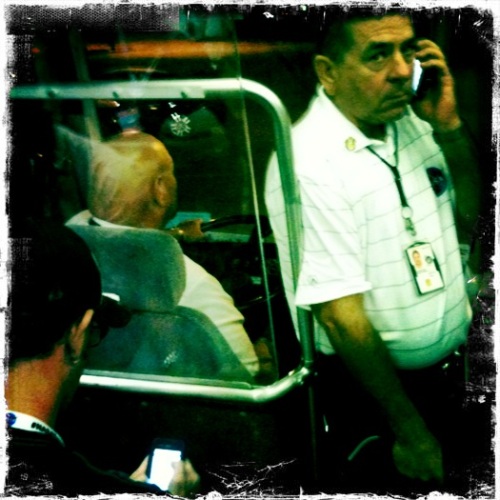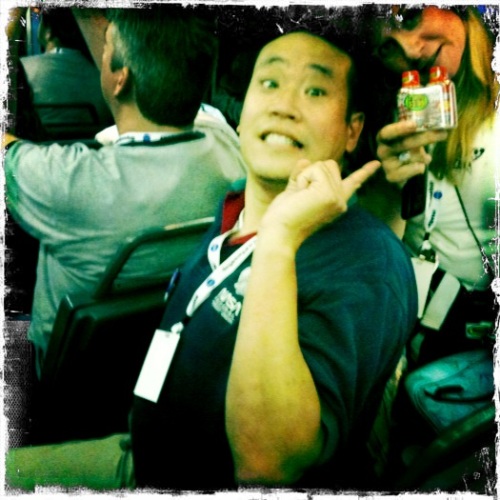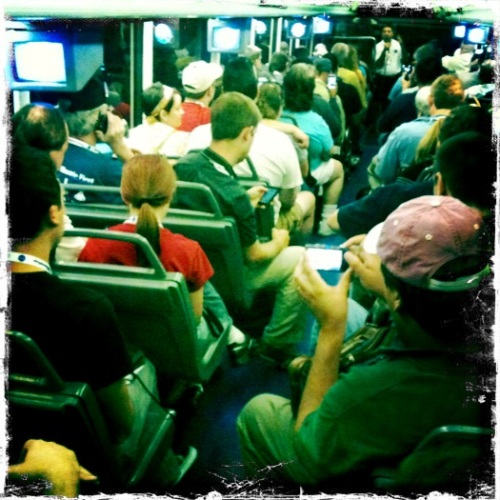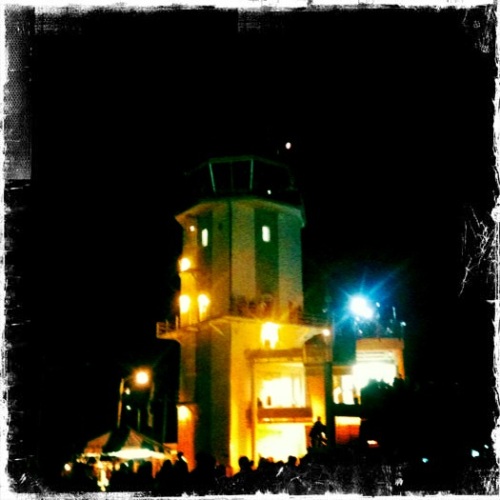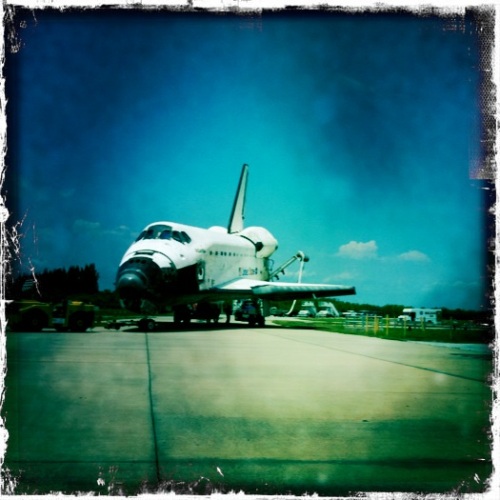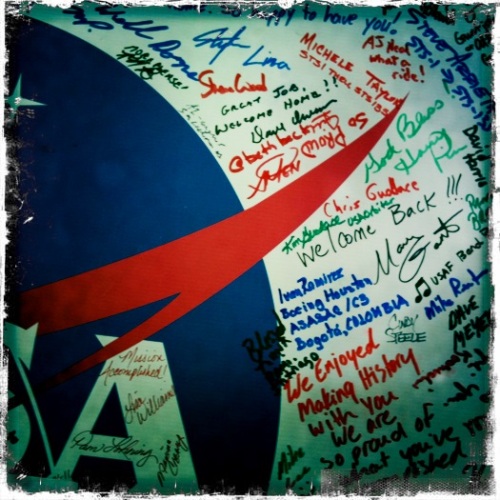Guest Post by Stanley Lambchop
Hi! My name is Flat Stanley. I belong to Nathan Woolverton, Beth Beck’s adorable nephew. Nathan’s class has an assignment to send me on an adventure. I’ve always wanted to go to space, so I asked if Nathan’s aunt Beth would take me to work with her. She works at NASA, you know. So, Nathan’s mom popped me into a mailer and here I am. I’m flat, you see, so I don’t cost much in postage to get from Texas to DC.

"Flat Stanley" book by Jeff Brown, 1964
Beth told me you might not know who I am. Really? Wow. I guess I better tell you a little about myself. I was born in 1964. My real name is Stanley Lambchop. My younger brother is Arthur. My dad gave me a bulletin board that fell on my bed, squashing me flat. Hey. Don’t worry. It’s not as bad as it sounds. I kinda like it. I’ll never grow bigger or older than I am now. How cool is that?!? AND, I can slip inside an envelop, fax or email to go ANYwhere I want. I’m getting to see much of the world.
But Nathan is special. He sent me on an out-of-this-world adventure. I dare you to top this! I’ve been sending Nathan email pics of my adventure. I have to write a journal too, so Beth thought a guest blogpost would let all of you enjoy my incredible experience. Now my class journal can be a virtual learning tool. Note: In case you’re wondering, I’m dictating my comments to Beth. I haven’t quite mastered typing on a keyboard with my flat fingers.
Fellow Earthings, prepare to get VERY jealous.
First of all, you should know that the weather in DC is very cold, icy and snowy in the winter. But while I’ve been up here, Nathan and his class have seen two snowstorms. Quite amazing — since he lives in warm sunny Texas. We had to shovel our way out before Beth and I could drive to work. We were both sweating inside our snow clothes. It’s hard work!

Washington DC: I helped shovel snow.
The U.S. Office of Personnel Management allowed federal government workers to telework or take vacation time off — just to keep thousands of drivers off the snowy roads. Beth had a meeting, so we drove in to work together. You know NASA is a government agency, right?
Here I am at NASA!

Here I am at NASA! Woot!
I came to visit on an important day, NASA’s Day of Remembrance, when NASA honors fallen heroes who’ve given their lives to the cause of exploration.

I learned about NASA's Day of Remembrance.
I toured the building. I found astronaut Deke Slayton’s spacesuit right down the hall from where Beth works. Deke was was one of the original NASA Mercury Seven astronauts, selected in 1959 (before I was born). He was the only member of the Mercury Seven not to fly. He was grounded because of a problem with his heart, but he ended up flying in space in 1975 with the Apollo-Soyuz test Project — the first time the U.S and Soviet Union worked together in space.

Here I am with Astronaut Deke Slayton's spacesuit.
I met Robonaut Centaur. Pretty cool dude. He rolls around on a rover base. He’ll help astronauts who are working on the surface of another planet. He’s kin to Robonaut 2, robo-humanoid STS-133 crewmember launching to Space Station on February 24.

I met Robonaut Centaur, cousin to STS-133 Robonaut2.
Here I am hangin’ with my new peeps, the RoboTwins: Robonaut 2 and Robonaut 2. They were duking it out over who gets to launch onboard STS-133 Space Shuttle Discovery on one of the final missions in the Shuttle program, scheduled for February 24.

Hangin with my peeps: RoboTwins
I inspected a Space Shuttle up close and personal. It’s really high way up at the top. Check it out!

Here's my Tank Top View. Original photo by NASA's Bill Ingals.
Here’s what a bird would see when a Space Shuttle launches. Pretty amazing, don’t you think? I can’t believe we’ll only have three more launches EVER in the history of mankind.

Only three more Space Shuttle launches EVer!
The only way off this planet, until we come up with another solution, is by rocket propulsion. “Beam me up, Scotty” only works on TV and in movies, sadly. Hopefully some of you out there will come up with a cool new mode of transportation, like dream transport or spacial folding techniques. (I just made those up, but who can predict what breakthrough might happen in the future.)
Once we get off the planet, though, we can see sights like these. Come along for the rocket ride.

Isn't Space Station amazing?
The International Space Station orbits 220 miles over Earth, circling the globe every 90 minutes at a speed of 17,500 mph with a international crew of six.

Another view of Space Station.

Flat Stanley on Top of the World

Moon tour: Nope. No cheese!

Sun: Man, this place is HOT!

Mars, the Red Planet. Humans could live here in the future.
When humans travel beyond Earth’s atmosphere, they need protection from the harsh environment of space. Either a spaceship or spacesuit — to provide air, cooling and heating, and other essentials. Our atmosphere provides a radiation shield, but once we go further out, we need to provide protection. On the planet’s surface, whether Moon or Mars, we’ll need a hardshelled suit, like the one I tried on. But I don’t think it fits. Do you?

I'm trying on the Mars suit. It's a bit big.
Maybe someday we’ll have bio-shields or exo-skins that protect us without a spacesuit. Maybe Nathan and his classmates will come up with a technology breakthrough that NASA can use.
Highlight of my visit: I met a real live astronaut! Really. I promise. Not only is Leland Melvin a spaceman, he’s also the Chief of Education at NASA. He really likes kids. You can tell. He stopped a meeting to pose for a picture with me. Cool dude!

Here I am with astronaut Leland Melvin!
Leland spent over 565 hours in space during two Space Shuttle missions: STS-122 in 2008 and STS-129 in 2009. He also played football in the NFL with the Detroit Lions in 1986, as well as the Dallas Cowboys and Toronto Argonauts, until injuries kept him off the field. Good thing for NASA. Don’t you think?
Maybe someday I’ll go live on Mars. I don’t weigh much. I don’t eat anything. I don’t need radiation protection, or even a spacesuit, for that matter. If Robonaut can be part of a space crew, I think a flat boy should have the chance. Leland and I are buds now. Maybe he can put in a good word for me. Hmmm.
I hope you liked my space adventure. I learned alot about NASA. I hope you did too.
Oh, and you can Facebook me, if you want. I have my own page. But for now, I need to get back to Nathan’s class. Time for me to get into the mailer, so Beth can get me to the post office. When I get back to Texas, I’m going to make sure Nathan asks his mom to let me watch live views from Space Station on the NASA TV channel on the web. You can too.

NASA discovered alien life after all!
 Barbara Jordan was one of my professors at the LBJ School at the University of Texas. She was the first African American elected to the Texas Senate and the first southern black female elected to the US House of Representatives, where she served on the House Judiciary Committee.
Barbara Jordan was one of my professors at the LBJ School at the University of Texas. She was the first African American elected to the Texas Senate and the first southern black female elected to the US House of Representatives, where she served on the House Judiciary Committee.












